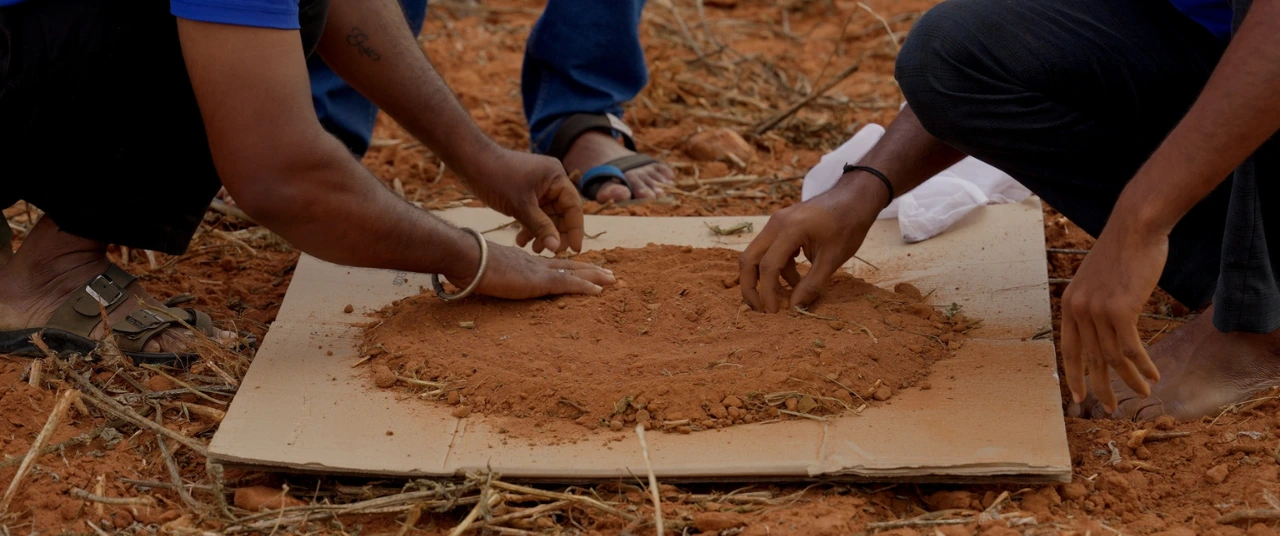How our farmlands are becoming a breeding ground for superbugs






The apple harvest in Himachal Pradesh's famed orchards has come up short this season, as the state’s collection centres have received only 3.61 lakh metric tonnes (LMT) of apples, a big drop from last year's 3.84 LMT. The dip has been attributed to several factors, according to Rakesh Thakur, an apple orchard owner in Shimla. “This year, the season, which typically runs from June 27 to October 25, started late. Ageing orchards are being replaced, and some farmers are shifting to other crops for year-round income. We’ve also faced setbacks from fungal infections.”
While the old adage about an apple a day keeping the doctor away may still hold some truth, the stakes are higher. According to a 2022 mBio study, 13% of sampled apples from northern India were found to harbour the drug-resistant fungus Candida auris, which has been linked to severe infections and carries a mortality rate of 34%, according to the Centres for Disease Control and Prevention (CDC) data.
With such high risks associated with this potentially deadly pathogen, the message is loud and clear: keep your apple safe by thoroughly washing it before taking a bite.

The presence of drug-resistant fungus on fruits like apples is just the tip of the iceberg. The broader, underlying issue is antimicrobial resistance (AMR) in our food systems, where once-healthy soil has become a breeding ground for antibiotic-resistant bacteria.
The increasing use of antimicrobials in agriculture, often used to boost crop yield and protect plants from diseases, is contaminating the soil with these substances. “Increasing use of antimicrobials in agriculture is contaminating the soil, leading to the emergence and selection of resistant strains,” said Rajesh Bhatia, former director of communicable diseases for WHO's South-East Asia regional office.
How AMR enters our soil
As global food demand rises, so too does the use of antibiotics to speed up livestock growth and protect crops from disease. While these practices may offer short-term gains, they also inadvertently create a long-term problem: antibiotic-resistant bacteria in soil.
These resistant bacteria can spread and survive in soil through multiple routes, including seeds, soil additives, irrigation water, and especially animal manure used as fertiliser. Antibiotics given to livestock often remain in their manure, and when this manure is applied to fields, it releases antibiotic residues and resistance genes into the environment.

AMR bacteria can contaminate crops, get into water supplies, and pass resistance to bacteria that infect people. As a result, common infections could become harder to treat, causing longer illnesses and more deaths. “The food we eat plays a critical role in the dynamics of AMR, largely due to the overuse of antibiotics. Intensive farming practices often involve giving animals antibiotics to promote growth and prevent disease, leading to resistant bacteria that can enter the human food chain,” said Dr Akhlesh Tandekar, head consultant of critical care at Wockhardt Hospitals Mira Road.
A recent study confirmed that animal manure often contains antibiotics like tetracyclines, sulfonamides, and fluoroquinolones, all of which contribute to the growth of AMR in soil. These resistant microbes can easily find their way onto nearby crops.
The food we eat plays a critical role in the dynamics of AMR, largely due to the overuse of antibiotics. Intensive farming practices often involve giving animals antibiotics to promote growth and prevent disease.
“Antimicrobials and bacteria from these sources also adapt and exchange genetic material, creating more resistant strains. Through the food chain, humans and animals can become exposed to these resistant pathogens,” said Bhatia.
In a 2021 study, researchers at the University of Nebraska-Lincoln found that over 60% of the antimicrobial resistance (AMR) genes found on lettuce leaves were traced back to soil that had been fertilised with animal manure.
Moreover, antibiotics are sometimes applied directly to plants, enhancing crop health and yields. However, this practice also fuels the spread of resistant bacteria in the soil. "For instance, tetracyclines are injected into tree trunks to combat citrus diseases like huanglongbing (HLB) and sprayed on pears and apples to prevent fire blight. Although effective, such practices add to the growing issue of resistance in soils, posing risks across the food chain," said Vidyut Singh, a pear farmer in Kullu.
Climate change then compounds the issue. "Rising temperatures create favourable conditions for bacteria to multiply, while excessive rains and water accumulation create an ideal environment for pathogens," said Bhatia.

Why it matters to you
In 2023, the WHO identified AMR as one of the top global public health threats. And the alarming part? These bacteria don’t respond to common antibiotics. "If they cause infections, doctors have fewer treatment options, turning a mild infection into a serious, potentially life-threatening condition. When people consume foods carrying antibiotic-resistant bacteria, they face the risk of infections that require longer hospital stays and can increase mortality rates," said Dr Tandekar.
According to the WHO, bacterial AMR caused an estimated 1.27 million deaths and contributed to an additional 4.95 million in 2019 alone. If left unchecked, the impact of AMR is predicted to be catastrophic, with an estimated 10 million deaths worldwide by 2050. India, with its vast population, carries a disproportionate burden of drug-resistant pathogens, highlighting the urgent need for action and interventions to mitigate this crisis.
For farmers, the impact is even more immediate. "Resistant bacteria degrade soil health, reducing crop yields. This forces farmers to rely on even more chemicals, creating a vicious cycle that is hard to break. Addressing AMR is crucial not just for our health, but for the sustainability of agriculture and food security," said Thakur.
Solutions for AMR-free farming
The challenge is significant. “India’s National Action Plan on AMR (2017-2021) highlighted the importance of a One Health approach, integrating efforts across human, animal, and environmental health. However, implementation faltered due to the pandemic and limited engagement from the environmental sector,” said Bhatia.
Despite setbacks, experts believe India's farming sector can still turn the tide. Here are their recommendations:
But India’s farming sector can still turn the tide. Here’s what the experts recommended:
- Go organic: Organic farming avoids antibiotics and synthetic pesticides, fostering healthier soil microbes that combat resistant bacteria. India has 2.6 million hectares under organic farming, fifth largest in the world, supported by the GOI’s Paramparagat Krishi Vikas Yojana, but broader adoption is needed.
- Integrated pest management (IPM): By using natural pest predators, crop rotation, and habitat modifications, IPM reduces reliance on chemicals, limiting resistant bacteria in the soil.
- Stricter regulation & awareness: Stronger enforcement of antibiotic regulations and educating farmers about AMR risks are essential. Public health campaigns should target rural areas to ensure greater awareness.
- Monitoring soil health: Focus on Soil Health Management (SHM) under the National Mission for Sustainable Agriculture (NMSA), by combining chemical fertilisers with organic manures and bio-fertilisers to improve soil health and productivity.
Protecting our soil from resistant bacteria means safeguarding our crops, health, and the future of Indian agriculture. That future depends on the choices we make today–in the fields, in research labs, and at our dinner tables.
{{quiz}}
Explore other topics
References
- https://journals.asm.org/doi/10.1128/mbio.00518-22
- https://wwwnc.cdc.gov/eid/article/29/7/23-0540_article
- https://pmc.ncbi.nlm.nih.gov/articles/PMC9522911/
- https://pubs.acs.org/doi/abs/10.1021/acs.est.1c02985
- https://www.who.int/news-room/fact-sheets/detail/antimicrobial-resistance
- https://www.investindia.gov.in/team-india-blogs/exploring-potential-indias-organic-food-market




-min.avif)






